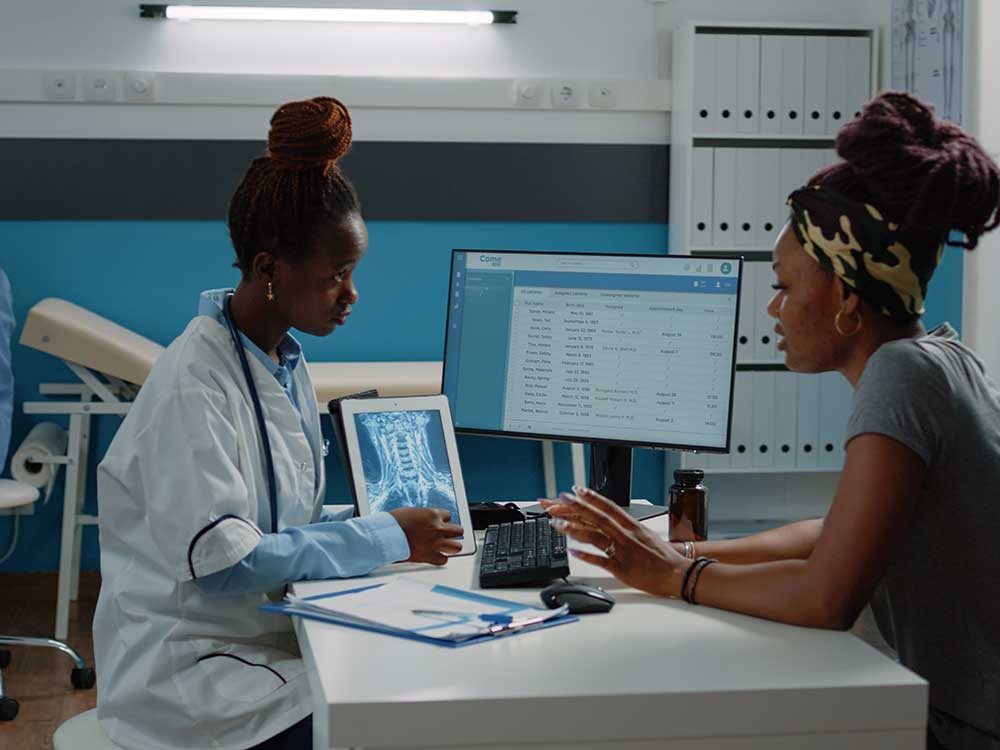Medical Administration Programs: What to Search for in a Quality Training course
Medical Administration Programs: What to Search for in a Quality Training course
Blog Article
Ideal Practices in Medical Management for Improving Effectiveness and Lowering Expenses
In the ever-evolving landscape of medical care, the pursuit of best practices in medical management is vital for enhancing performance and suppressing costs. By integrating advanced innovations such as digital health records and telemedicine, medical care providers can enhance procedures and improve client treatment. Technology alone is not a panacea; maximizing source allowance and promoting joint communication amongst care teams are equally important. As companies aim to balance high quality and cost, what approaches should be focused on to achieve these double objectives? The solution to these concerns hold the trick to a much more lasting health care system.
Leveraging Advanced Modern Technology
In today's swiftly developing health care landscape, leveraging advanced modern technology is no longer optional but important for efficient medical management. The combination of digital remedies right into medical care systems has actually changed the way facilities operate, improving processes and improving individual treatment. Electronic Wellness Records (EHRs) are crucial, giving comprehensive patient data that can be accessed instantaneously by licensed workers, hence lowering redundancy and minimizing errors. By streamlining person information, EHRs eliminate the requirement for cumbersome paperwork and help with smooth communication amongst doctor.
Telemedicine is another technological innovation that has reinvented individual communication. It uses benefit for both individuals and healthcare experts by making it possible for remote assessments, which can minimize the need for in-person check outs and maximize consultation organizing. In addition, telehealth platforms can extend healthcare accessibility to country or underserved locations, connecting gaps in treatment distribution.
Additionally, using Artificial Knowledge (AI) and artificial intelligence is ending up being significantly common in anticipating analytics, enabling for early detection of potential health concerns and more informed decision-making. These modern technologies, when incorporated effectively, can improve analysis accuracy and personalize person therapy strategies, inevitably resulting in boosted healthcare results and functional performance.
Optimizing Source Allotment
By tactically handling resources such as workers, tools, and financial resources, medical care centers can substantially boost their functional performance, enhance client outcomes, and decrease unnecessary expenditures. The very first action in maximizing source allocation includes carrying out a comprehensive evaluation of current possessions and recognizing locations where resources may be underutilized or exhausted.
Focusing on source allotment based on person needs and service demands is crucial. Applying versatile staffing versions can additionally enhance labor resources by changing workers appropriation in response to rising and fall individual quantities.
Monetary sources need to be meticulously kept an eye on and allocated with critical insight to sustain both temporary functional demands and long-term institutional objectives. This consists of investing in training programs that boost staff competencies and embracing energy-efficient practices that reduce operational expenses (medical administration). Eventually, an optimized source allocation strategy cultivates a sustainable medical care environment that is responsive, efficient, and economically prudent
Streamlining Operations Processes
When medical care facilities objective to improve operational efficiency, streamlining operations procedures ends up being a pivotal focus. i loved this Efficient operations lessen redundancy, remove unnecessary actions, and boost coordination amongst medical care specialists. This approach not only accelerates service distribution but also boosts the quality of individual treatment.

Following, technology combination plays a considerable role in improving process. Implementing digital health and wellness records (EHRs) and electronic doctor order access (CPOE) systems minimizes paperwork, lessens human error, and ensures information is easily accessible to all relevant workers. In addition, leveraging telemedicine systems can streamline person appointments and follow-ups, minimizing the pressure on physical infrastructure.

Inevitably, structured process result in set you back reductions and boosted individual complete satisfaction, cultivating a much more sustainable medical care setting.
Enhancing Information Management
Structure upon streamlined workflows, enhancing information management comes to be a crucial element ahead of time medical care management. Effective information management systems are critical for maintaining precise individual documents, improving decision-making, and ensuring compliance with regulatory criteria. By implementing durable information administration remedies, health care facilities can enhance the quality of person care while concurrently lowering operational costs.
One key element of boosting data administration is the assimilation of innovative electronic health record (EHR) systems. These systems promote the smooth exchange of person information across different departments, minimizing replication of tests and reducing errors. A well-designed EHR system sustains data analytics, making it possible for doctor to determine fads and make educated choices pertaining to individual treatment.
Additionally, securing person data is vital. Taking on comprehensive cybersecurity steps, including encryption and regular audits, makes certain the honesty and confidentiality of delicate details. This not just secures patients however additionally keeps the institution's reputation.
Spending why not find out more in team training is one more important factor. Enlightening medical care experts on information management methods enhances their ability to effectively utilize innovation, leading to boosted individual outcomes. In conclusion, boosting information management via sophisticated innovation and detailed training is crucial for achieving efficiency and cost decrease in medical administration.
Fostering Collaborative Interaction
An essential component in progressing medical management is fostering joint communication amongst medical care experts. Effective interaction is paramount for guaranteeing seamless individual treatment, maximizing therapy outcomes, and decreasing errors. By encouraging open dialogue and control across multidisciplinary groups, health care companies can enhance their operational performance and decrease unneeded expenses.
Central to this method is the integration of communication innovations such as digital wellness documents (EHRs) and secure messaging systems, which assist in the quick exchange of crucial client info. These devices enable healthcare companies to access and share information in genuine time, guaranteeing that all staff member are informed and straightened in their decision-making processes. In addition, normal group conferences and interdisciplinary rounds can further promote a culture of partnership and accountability.
Training programs concentrated on enhancing communication abilities are also necessary. These programs can assist personnel create the capacity to share details plainly and pay attention proactively, therefore lowering misconceptions and promoting a supportive workplace. Additionally, taking on standard interaction methods, such as SBAR (Situation, Background, Evaluation, Suggestion), can improve the exchange of info, guaranteeing that vital details are communicated succinctly and effectively. Ultimately, fostering collaborative interaction leads to boosted health care delivery and cost financial savings (medical administration).

Verdict
Integrating innovative technology, such as electronic health and wellness records and telemedicine, alongside maximized resource allowance and structured process processes, is vital for discover here boosting performance in clinical management. Efficient information monitoring and fostering joint communication amongst healthcare teams are essential for reducing redundancies and boosting treatment top quality. By focusing on precautionary care and engaging in high quality renovation campaigns, medical care companies can attain substantial cost financial savings and improved individual end results, therefore making certain sustainable medical care distribution in an increasingly complex setting.
Report this page